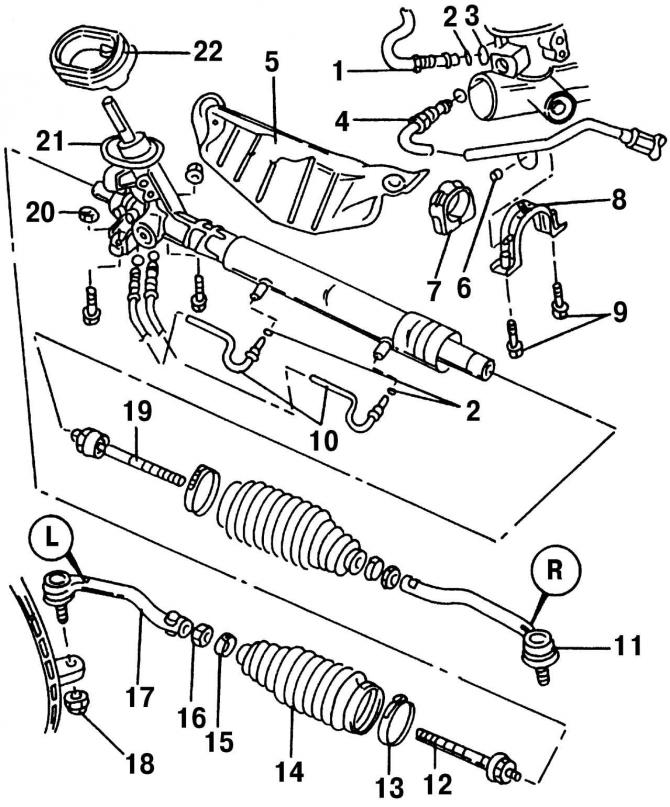
Pic. 262. Steering: 1 - recirculation hose; 2 - sealing ring; 3 - threaded connection of the recirculation hose; 4 - discharge pipeline, 30 Nm; 5 - thermal insulation screen; 6 - nut; 7 - rubber support; 8 - clamp with welded nuts; 9 - bolt, 60 Nm (replace always); 10 - pipeline; 11 - tie rod joint, right (R label); 12 - left tie rod, 70 N·m; 13 - collar; 14 - protective cover; 15 - clamp; 16 - nut, 55 Nm; 17 - tie rod joint, left (label L); 18 - self-locking nut, 30 Nm + 90°; 19 - right tie rod, 70 N·m; 20 - self-locking nut; 21 - power steering mechanism; 22 - rubber gasket
The tie rods are not the same, so the left tie rod is marked with the letter «L», and the right - the letter «R». The location of the marks is shown in fig. 262. If, during the checks described below, you establish that the tie rods are faulty, they can be replaced without removing the steering gear:
- hinge covers must not be damaged;
- start the engine. Turn the front wheels in any direction and, holding the tie rod joint with your hand, turn the steering wheel left and right (the operation is performed by two). If you notice increased clearance, replace the hinge;
- Raise the front of the vehicle and pull the tie rod back and forth strongly. If play is felt in the hinge, replace the hinge;
- check the inner hinge in the same way. To do this, remove the steering seal. If play is found when checking the inner joint, completely replace the tie rod.

Visitor comments